© Use of content without authorization is prohibited
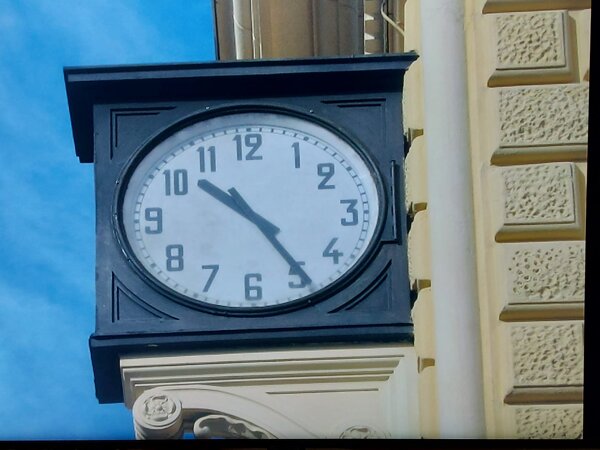
Emilia Romagna
Bologna Ferrara Forlì-Cesena Modena Parma Piacenza Ravenna Reggio Emilia Rimini
Two regions enclosed in one; Emilia, flat with beautiful Renaissance cities surrounded by lands rich in water and fertile soil, Apennine with medieval villages immersed in lush nature; Romagna, with beaches full of fun, hills with green slopes where you can find peace and freedom. I have lost count of how many times I have visited this region, so much so that I feel at home here. Of course, I have my preferences... the Castles of the Duchy of Parma and Piacenza, Ferrara and the wonders of Este culture, the Reggiano Apennines just to name a few. However, where Emilia Romagna is unbeatable is in food and wine: oven-baked lasagna, tagliatelle, cappelletti in broth, green tortelli and my favorite dish... Pisarei e Fasò; excellent foods served instead of bread such as Bortelline, Gnocco fritto, Crescentine and finally the queen... the Piadina Romagnola. A great variety of vegetables to accompany with Balsamic Vinegar of Modena. Among the white wines, Pignoletto and the excellent Ortrugo; among the reds, the delicious sweet Lambrusco and Gutturnio.

Metropolitan City of Bologna
Area: 3703 km² Municipalities: 55
Bologna: Basilica of San Petronio
Bologna: Basilica of San Petronio
travel stories...
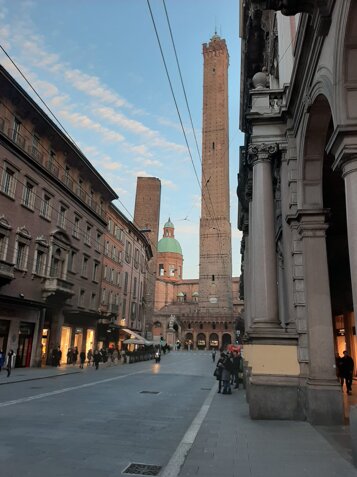


Castiglione dei Pepoli
Monghidoro
The chorus of a famous song from twenty years ago went "but how beautiful it is to go around the Bolognese hills." Indeed, it was pleasant to venture, curve after curve, up to this village in the Tuscan-Emilian Apennines. Arriving at my destination at noon, I found a small restaurant near the Town Hall, behind a little square, a natural balcony overlooking the Brasimone valley. The place is decorated with unique paintings; behind my table there is one depicting a rockstar. A long and relaxing lunch break, with an appetizer, a plate of tagliatelle, and a bottle of Lambrusco. A chat with a couple at a nearby table; when they tell me the town they come from, I show them the photo of the sign, arousing amazement and admiration for my way of traveling "in detail." Leaving the tavern, in the square of the historic center, I look up at the Clock Tower showing 3 p.m.; opposite is the eighteenth-century Town Hall, which belonged to the ancient Pepoli family. I walk along the main street; for the customary photo I choose the Doccia Fountain, which, as the plaque says, was once a washhouse and an old meeting place for the women of the village. Next to it is the Church of San Lorenzo, with its pale red facade and beautiful seventeenth-century bell tower, 40 meters high. Inside, three naves with magnificent frescoes on the walls of the old part. Back at the car, I drive the few kilometers that separate me from Tuscany in an area surrounded by woods; the last green stronghold of a municipality that, between the high-speed railway and the highway with the mountain pass variant, has already paid a heavy price to progress.
I arrived in this town coming from Via Savena, a little-traveled road that alternates for kilometers between meadows and groves, often offering views of a splendid valley. After leaving my car at the entrance to the town, I immediately find the parish church dedicated to Santa Maria Assunta, which looks ancient but was recently rebuilt. The church and the clock tower, both made of dark stone, and on the door the inscription "First Communion," a sacred event on this last Sunday in May. Opposite is a bar where I relax, sipping beer with soda. A few steps under the portico along the main street, lively at aperitif time. On the way back, near the Town Hall, I photograph some murals on the facades of the houses. The singer Gianni Morandi was born here; I thought I would find something to remember him by, but that was not the case. The most interesting area of this municipality is the hamlet of Campeggio: here there is an ancient Marian Sanctuary where Don Bonafè, parish priest in the 1920s, had a reproduction of the Lourdes grotto built inside the church. Outside, the "Via Crucis," an avenue that begins with beautiful statues of saints. Then, as you climb, it becomes a narrow road through the vegetation with a few scattered houses. I climb this hill, called "Monte Calvario," at the top of which stand three large crosses. From up here I overlook the valley of the Idice stream, and it is this image that accompanies me on the long highway journey that takes me back home.
Bologna
Having found parking near the station, I walked briskly to the center. I catch my breath sitting on the steps of Palazzo Enzo and begin to breathe in a bit of the history of this city. Behind me is this historic building where Enzo of Swabia, King of Sardinia, was held prisoner until his death; in front of my eyes a large fountain with the monument to Neptune, God of the Sea. I get up and in a few steps I am in the beautiful Piazza Maggiore. On the right is Palazzo d'Accursio, the seat of the Municipality; on the left the Palazzo del Podestà, a beautiful medieval architecture above which stands the Torre dell'Arengo. In front is the Basilica of San Petronio, an imposing Gothic church where Pope Clement VII crowned Charles V Emperor of the Holy Roman Empire. The facade of the basilica is covered with marble only in the lower part, while the upper part is exposed brick. Inside there are as many as twenty-two chapels, one of which in the left nave contains the relics of San Petronio. From the sacred to the profane is a short step; nearby are the Torre degli Asinelli and the Torre della Garisenda, symbols of Bologna. Returning to the car, I stroll under the city's characteristic porticoes, among the longest and most beautiful in the world. I conclude the visit with a minute of silence under the station clock, which still marks 10:25, as a testament to the vile attack that at that hour on August 2, 1980, caused 85 deaths and numerous injuries.
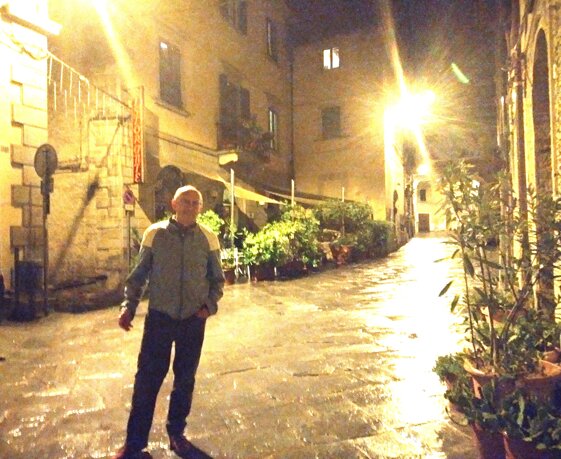
Province of Forlì-Cesena
Area: 2378.40 km² Municipalities: 30
Portico di Romagna: historic center by night
Portico di Romagna: historic center by night
Travel photos...
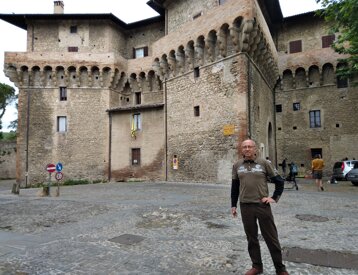

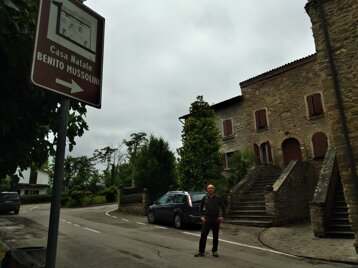
Modigliana
Predappio
Castrocaro Terme
Lady's Bridge
Birthplace of Benito Mussolini
Captain of the Square Castle

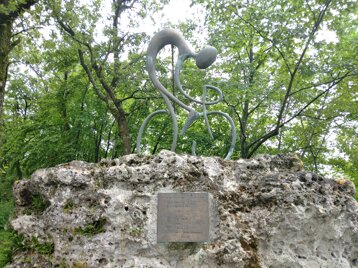
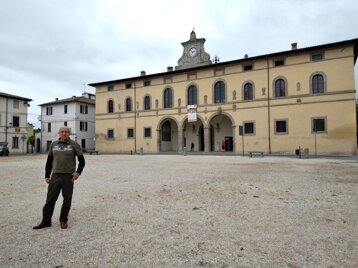
Portico di Romagna
Monte Trebbio
Land of the Sun
Vault of Palazzo Portinari
Cyclist Monument
Palace of the Commissioners or Praetorian Palace

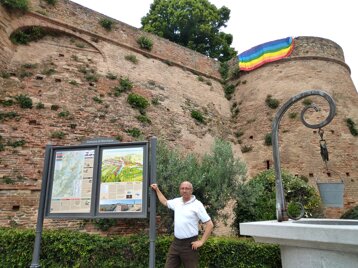
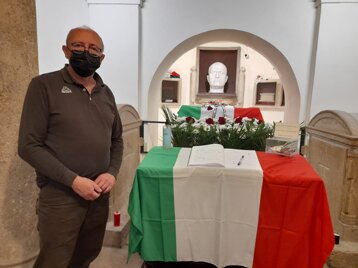
Montiano
Predappio
the Malatesta Fortress (late 16th century)
Tomb of Benito Mussolini
Tredozio
Parish Church of San Michele
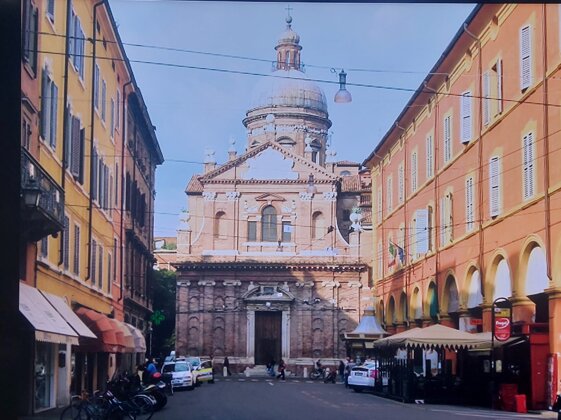
Province of Modena
Area: 2688 km² Municipalities: 47
Modena: Church of the Vow seen from Corso Duomo
Modena: Church of the Vow seen from Corso Duomo
Travel photos...
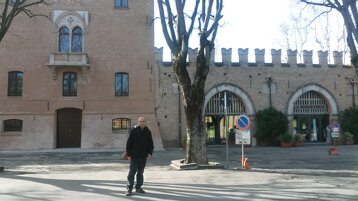
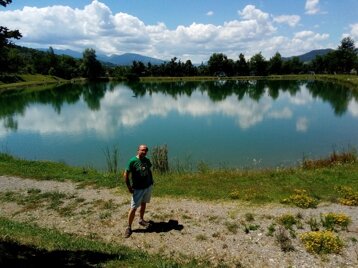

Mirandola
Montefiorino
Zocca
Castle belonging to the Pico family
Lake Albert
The town of Vasco Rossi...
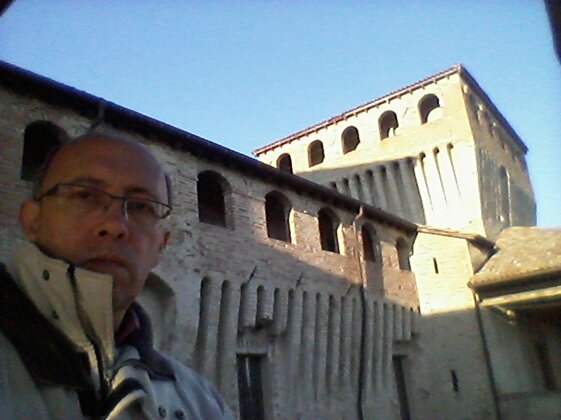
Province of Parma
Area: 3447.48 km² Municipalities: 44
Torrechiara Castle
Castle of Torrechiara
Travel photos...

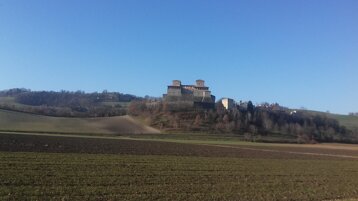

Montechiarugolo
Borgo Val di Taro
Medieval Castle
Palazzo Boveri
Langhirano
Countryside around the Torrechiara Castle
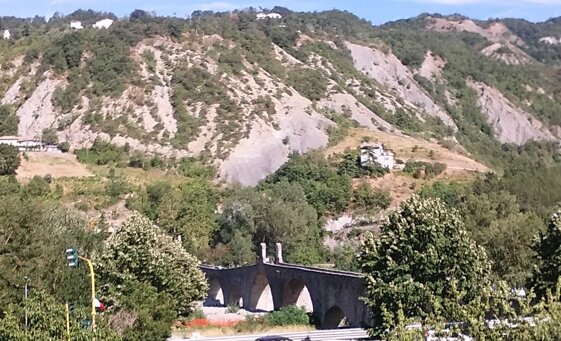
Province of Piacenza
Area: 2585.86 km² Municipalities: 46
Bobbio: Gobbo Bridge over the Trebbia River
Bobbio: Gobbo Bridge over the Trebbia river
travel photos...
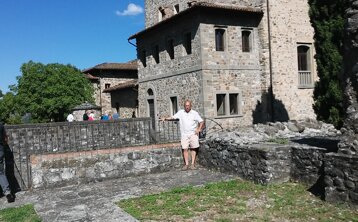
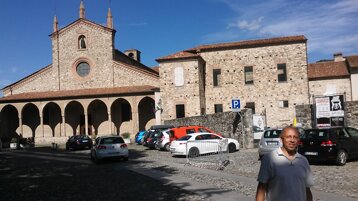

Bobbio
Bobbio
Bobbio
The facade of the Renaissance Basilica of the ancient Abbey of San Colombano
Ponte Gobbo, pedestrian bridge from the Roman era built over the Trebbia river
Malaspina-Dal Verme Castle, a stone fortress from the 14th century

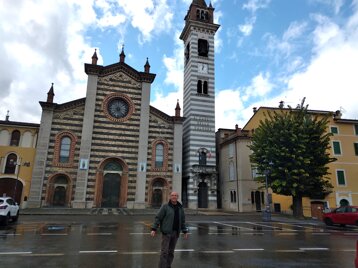
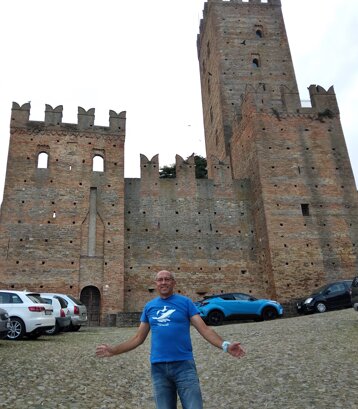
Bettola
Bettola
Castell'Arquato
Statue dedicated to the navigator Christopher Columbus
Sanctuary of the Blessed Virgin of the Oak
Visconti Fortress
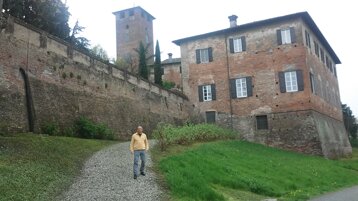

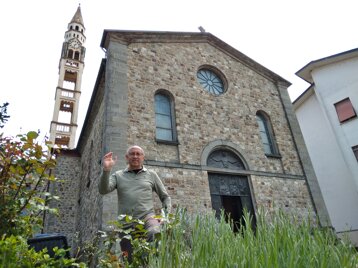
Veleia
Corte Brugnatella
Archaeological excavations of an ancient Roman city
Church of San Giuseppe in the hamlet of Marsaglia
Sarmato
medieval castle

Province of Reggio Emilia
Area: 2291.26 km² Municipalities: 42
Gualtieri: Bentivoglio Square
Gualtieri: Piazza Bentivoglio
travel photos...
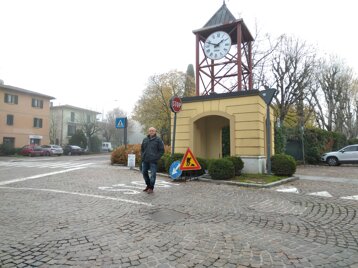
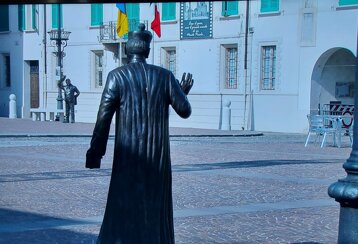
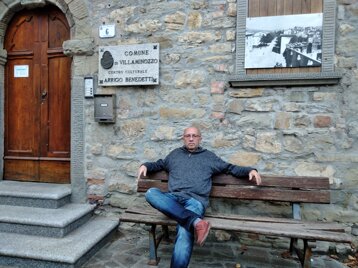
Brescello
Albinea
Villa Minozzo
Monument to Don Camillo, in the background the statue of Peppone
Piazza Cavicchioni
Town Hall